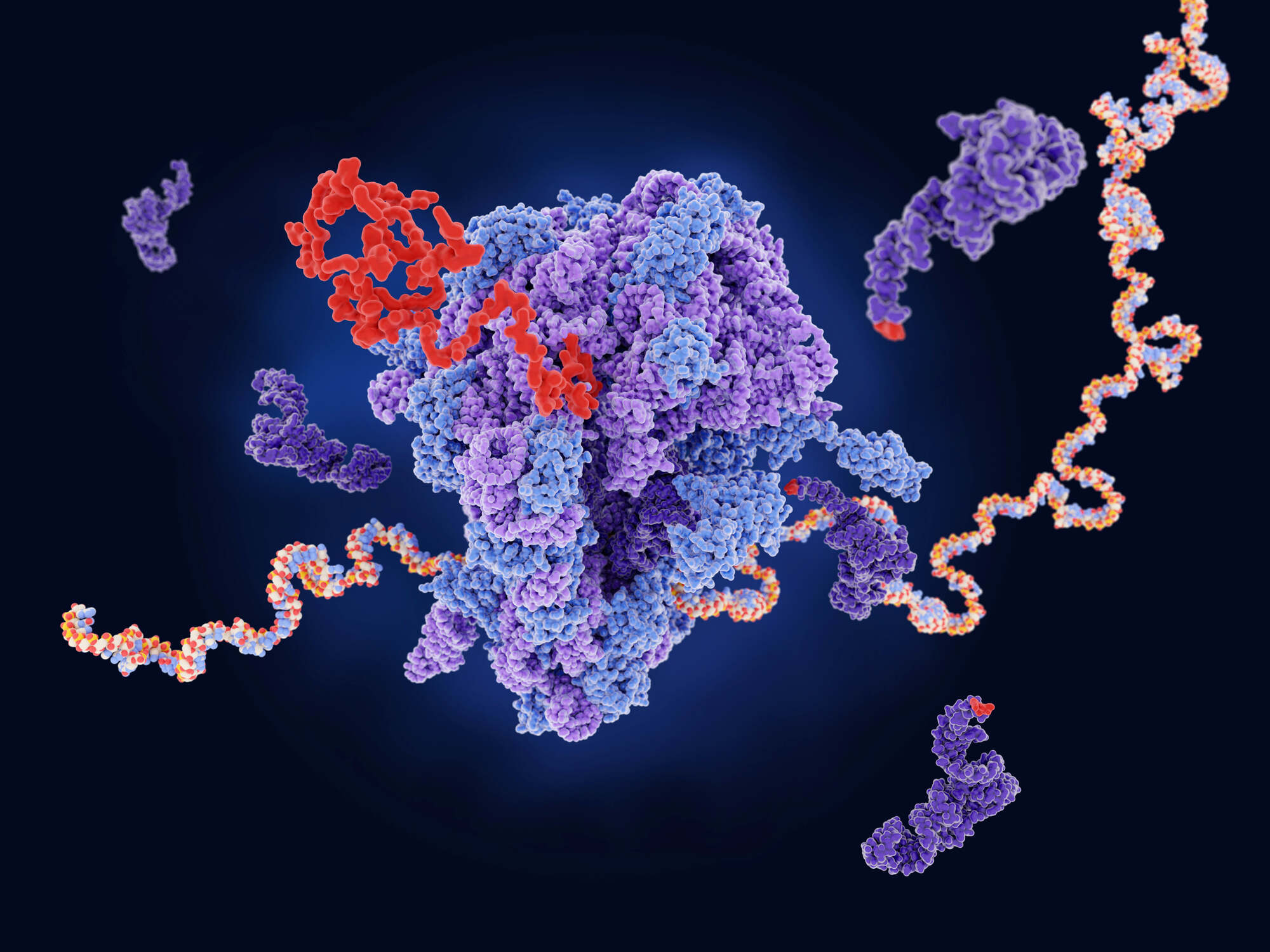
What is tRNA? Transfer RNA, or tRNA, is a type of RNA that helps decode a messenger RNA (mRNA) sequence into a protein. tRNA plays a crucial role in protein synthesis by carrying amino acids to the ribosome, where proteins are assembled. Each tRNA molecule has a specific anticodon that pairs with a corresponding codon on the mRNA strand, ensuring the correct amino acid is added to the growing protein chain. Without tRNA, cells wouldn't be able to produce proteins, which are essential for countless biological functions. Understanding tRNA is key to grasping how genetic information is translated into the proteins that keep organisms alive.
What is tRNA?
Transfer RNA (tRNA) plays a crucial role in translating genetic information from mRNA into proteins. These small molecules act as adapters, matching amino acids to their corresponding codons on the mRNA strand.
- tRNA Structure: tRNA molecules have a cloverleaf structure with three hairpin loops.
- Anticodon Loop: One of the loops contains an anticodon, a set of three nucleotides that pairs with a complementary codon on mRNA.
- Amino Acid Attachment: The 3' end of tRNA attaches to a specific amino acid, which it carries to the ribosome.
- tRNA Length: Typically, tRNA molecules are about 76 to 90 nucleotides long.
- tRNA Genes: Human cells have around 500 tRNA genes, though not all are functional.
- Modified Bases: tRNA contains unusual bases like pseudouridine and inosine, which help in stability and function.
How tRNA Functions in Protein Synthesis
tRNA's primary role is to decode mRNA sequences into amino acids, forming proteins. This process is essential for cell function and growth.
- Codon Recognition: tRNA recognizes codons on mRNA through its anticodon loop.
- Aminoacyl-tRNA Synthetase: This enzyme attaches the correct amino acid to its corresponding tRNA.
- Ribosome Binding: tRNA binds to the ribosome's A site during translation.
- Peptide Bond Formation: The ribosome catalyzes the formation of peptide bonds between amino acids.
- Translocation: tRNA moves from the A site to the P site, then to the E site before exiting the ribosome.
- Wobble Hypothesis: The third base of the codon can pair with multiple bases in the anticodon, allowing flexibility.
tRNA and Genetic Code
The genetic code is universal, and tRNA plays a pivotal role in interpreting this code during protein synthesis.
- Universal Code: The genetic code is nearly universal across all organisms.
- Degeneracy: Multiple codons can code for the same amino acid, a feature known as degeneracy.
- Start Codon: AUG is the start codon, signaling the beginning of protein synthesis.
- Stop Codons: UAA, UAG, and UGA are stop codons, signaling the end of protein synthesis.
- Codon Usage Bias: Different organisms prefer certain codons over others, influencing tRNA abundance.
- tRNA Adaptation: tRNA molecules adapt to the codon usage of their respective organisms.
Evolution and Diversity of tRNA
tRNA molecules have evolved to meet the needs of different organisms, showcasing a remarkable diversity.
- Evolutionary Conservation: tRNA structure is highly conserved across species.
- Horizontal Gene Transfer: tRNA genes can be transferred between organisms, contributing to genetic diversity.
- tRNA Isoacceptors: Different tRNA molecules can carry the same amino acid but have different anticodons.
- tRNA Pseudogenes: Some tRNA genes are non-functional, known as pseudogenes.
- tRNA in Mitochondria: Mitochondria have their own set of tRNA molecules, distinct from nuclear tRNA.
- tRNA in Archaea: Archaeal tRNA molecules have unique modifications not found in other domains of life.
tRNA Modifications and Stability
Modifications to tRNA molecules are crucial for their stability and function.
- Post-Transcriptional Modifications: tRNA undergoes various modifications after transcription.
- Methylation: Addition of methyl groups to tRNA bases increases stability.
- Pseudouridylation: Conversion of uridine to pseudouridine enhances tRNA function.
- Inosine Formation: Inosine in the anticodon loop allows for wobble base pairing.
- tRNA Stability: Modified bases contribute to the overall stability of tRNA molecules.
- tRNA Degradation: Cells have mechanisms to degrade faulty or damaged tRNA molecules.
tRNA in Medical Research
tRNA research has significant implications for understanding diseases and developing new treatments.
- tRNA and Cancer: Abnormal tRNA expression is linked to various cancers.
- tRNA and Neurodegenerative Diseases: Mutations in tRNA genes are associated with neurodegenerative disorders.
- tRNA and Viral Infections: Viruses can hijack host tRNA to enhance their own protein synthesis.
- tRNA as Therapeutic Targets: tRNA molecules are potential targets for new drugs.
- tRNA in Genetic Disorders: Mutations in tRNA genes can cause rare genetic disorders.
- tRNA and Aging: Changes in tRNA function are linked to the aging process.
- tRNA Biomarkers: tRNA molecules can serve as biomarkers for disease diagnosis and prognosis.
The Final Word on tRNA
tRNA, or transfer RNA, is a small but mighty molecule playing a crucial role in protein synthesis. It acts as a bridge, translating genetic code into proteins, which are essential for countless biological functions. Each tRNA molecule carries a specific amino acid to the ribosome, ensuring proteins are built accurately. Without tRNA, cells couldn't produce proteins, leading to a breakdown in vital processes. Understanding tRNA's function helps us grasp how genetic information is expressed and how life sustains itself. This tiny molecule's importance can't be overstated, as it underpins the very foundation of biology. So next time you think about the complexity of life, remember the unsung hero, tRNA, working tirelessly behind the scenes.
Was this page helpful?
Our commitment to delivering trustworthy and engaging content is at the heart of what we do. Each fact on our site is contributed by real users like you, bringing a wealth of diverse insights and information. To ensure the highest standards of accuracy and reliability, our dedicated editors meticulously review each submission. This process guarantees that the facts we share are not only fascinating but also credible. Trust in our commitment to quality and authenticity as you explore and learn with us.
